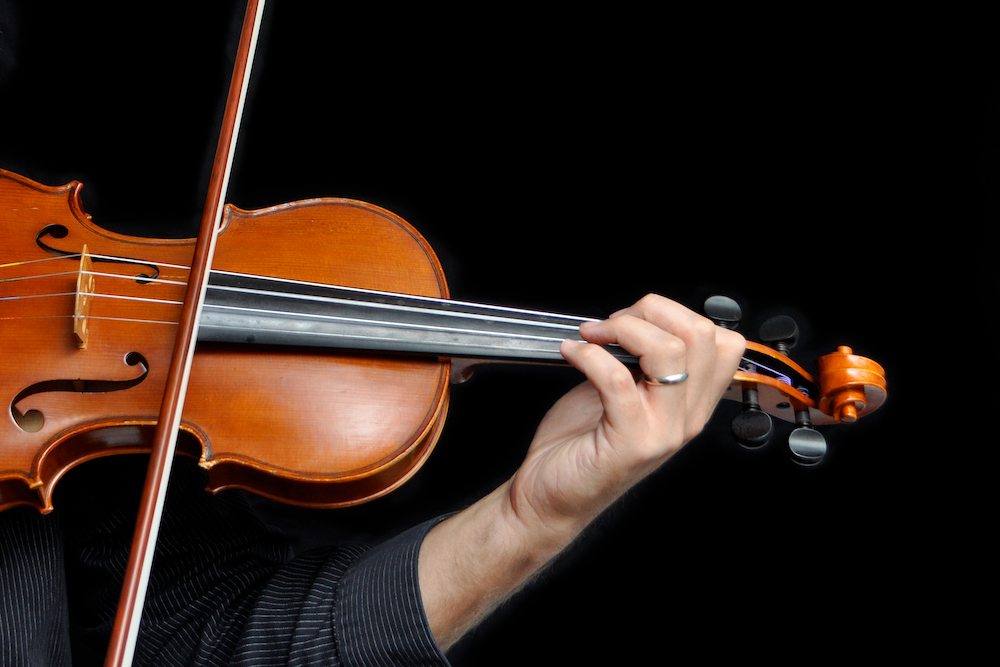I’ll start with a theatre story. In the early 1960s, Jerry Bock (composer), Joseph Stein (book writer), and Sheldon Harnick (lyricist) were working with Jerome Robbins (director) on a new musical set in Russia. It would come to be known as Fiddler on the Roof.
They had made a fair amount of progress on the show, but Jerome Robbins wasn’t happy with the opening number. Here’s what Harnick had to say about the process:
“We had many, many meetings before we went on to rehearsal and at each meeting he started with the same question: ‘What is this show about?‘ And he would say: ‘There’s something that gives this show its power and we don’t know what it is.’
And finally, at one of those meetings, one of us said: ‘Hey, you know what this show is about? It’s about the changing of a way of life of a people in these Eastern European communities, these little towns, these shtetls.’ And Robbins got very excited about that.
He said: ‘If that’s the case, then what you have to write is a number about traditions, because we’re going to see those traditions change.’ And that’s so important in the show. Every scene or every other scene will be about whether a tradition changes or whether it remains the same.
So instead of a song with the mother and the daughters getting ready for the Sabbath, he wanted us to write a song about tradition because he thought that’s what the show is really about.”
At 90, ‘Fiddler’ Lyricist Tells His Story: 2014 Interview with Sheldon Harnick on NPR’s Fresh Air (20:40)
Asking the Question
I’ve listened to a lot of experienced filmmakers & editors, and they all start with the same question when they pick up a new screenplay:
“When I first meet with the scriptwriter, I never tell him anything, even if I feel there’s a lot to be done. Instead, I ask him the same questions I’ve asked myself: What is this story about? What did you see? What was your intention?”
Sidney Lumet in his chapter on “The Script” in Making Movies.
If you’re a seasoned screenwriter, you’ve already spent months thinking about it:
“These questions… are what I ask myself before I begin. Always, always. And many times over. What’s the Story Really About?“
William Goldman in Chapter 15: Before We Begin Writing in Adventures in the Screen Trade.
What is the story about? Filmmakers aren’t looking for a long rundown of the plot when they ask you this question. They don’t want the logline or an elevator speech (that’s the bait, not the hook).
In essence, they want what Jerome Robbins wanted—just one word. They’re looking for the central theme.
Theme vs. Plot

Central Theme: The central theme is universal; it’s an idea or feeling that every human being can relate to. Tradition is a very powerful theme, since there’s always a push and pull between generations (e.g. The Big Sick). But a script might also be about independence or honor or understanding or balance (“Use the Force, Luke”).
Plot: In contrast, the plot can—and should—be specific, with unique characters, settings, and situations. Fiddler on the Roof wouldn’t be the same without the shtetl and Tevye and his 5 daughters. Seven Samurai is deeply rooted in the history of the Sengoku period. This makes the film memorable. It “sticks” in the audience’s mind.
The real trick is marrying the two concepts. You can have a script with a great plot, but no universal resonance. And you can have a story with a grand central theme and a weak plot. I’ve written both in my time. And I’ll continue to write them.
Shaping the Screenplay
But if you can get the two working in harmony, then you’re really in business.
1. Rough Out the Plot: I find that it helps to start with shaping the plot first. “What happens next?” is always a question that excites the conscious brain. Unusual people, the quirks of dialogue, the excitement of a chase or a love affair—that’s why you want to tell a story.
2. Identify the Central Theme: Just be aware that your unconscious is working overtime. It has probably already latched onto a universal theme. And it will continue to nag at you, in the back of your mind, until you acknowledge it. This story is about something important. That’s why you need to tell it.
3. Explore the Theme in Scenes: Once you’ve got the plot in rough shape, you’ll discover a number of scenes where you can explore the universal theme. These scenes can be epic or intimate, such as:
- Personal Decisions: Should Tevye allow his daughters to choose their own suitors? Should Chava stay in the village with her family or abandon her faith for love?
- Power Struggles: Who ultimately wins the argument between Perchik and the elders?
- Historical Events: Can Anatevka maintain its traditions even as the Tsar seeks to destroy them?
- Reflective Moments: Can old customs like arranged marriages still lead to modern happiness?
When in doubt, think of it like a film score. Throughout the story, the central theme will be played in different ways, at different moments. But it’s always there.
